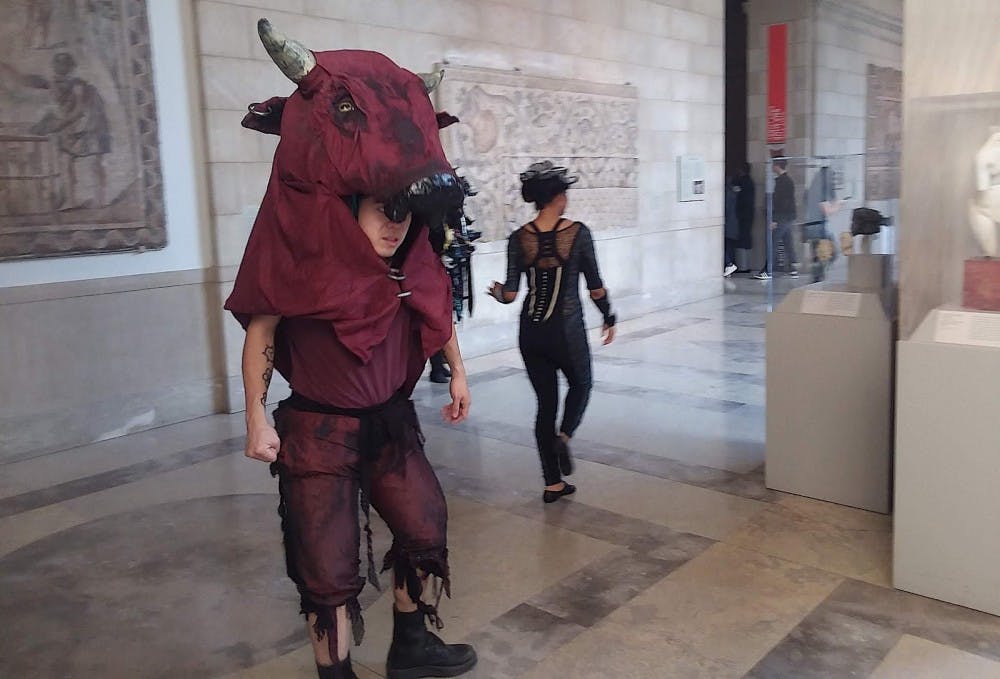If I had a dime for every pre-med who’s told me that they “haven’t had time” to go to the Baltimore Museum of Art (BMA), I’d have the larger part of my tuition paid.
One of the great tragedies of life at Hopkins is that even though one of the best museums in the city is literally feet from the edge of campus, large portions of the student body simply aren’t interested, even though it’s free.
Part of this stems from the misconception that the BMA is just another stuffy marble museum, with nothing new to interest arts-inept STEM majors. While this is a compelling excuse, it reveals that its proponents have little experience with the BMA.
Last Sunday, Feb. 24, I went to the opening celebration for the BMA’s Monsters & Myths exhibit. The exhibit features almost 90 surrealist masterworks from the 1930s and 40s. It ranges across all mediums, from paintings to sculptures to film.
Monsters & Myths includes pieces from many of the surrealist scene’s biggest names, such as Pablo Picasso, Salvador Dalí and (my personal favorite) Max Ernst.
The exhibit acts as a summary of the surrealist movement pre-World War II, as artists were fleeing Europe. As war crept closer, these artists tried to capture themes of fascism, genocide and war in their art. As explained by the museum’s website, “Monstrosities in the real world bred monsters in paintings and sculpture, on film, and in the pages of journals and artists’ books, resulting in a period of extraordinary creativity.”
The exhibit helps provide a useful context to the vivid and sometimes disturbing art.
I was particularly interested in Max Ernst’s Europe After the Rain II, which he made while illegally residing in Arizona after fleeing Nazi Germany. The detailed landscape portrays a scene of decaying badlands, showing a post-apocalyptic wasteland full of colors yet void of civilization.
But even if mildly depressing surrealist art isn’t quite your style, the BMA has more to offer.
Sunday’s event spanned across the entire building, with talks and performances occurring throughout the afternoon. Children could create personalized masks to wear, and refreshments were served in the Antioch Court.
Interpretive dancers made their way through the hallways, decked out to the nines in Venetian Renaissance costumes. They delighted and confused museum-goers, popping up unexpectedly in the museum’s permanent collections or in front of the event’s snack table to jump and dance.
My favorite part of the event was the creation of a cardboard labyrinth in the Fox Court made by students from Morgan State University’s School of Architecture and Planning. Visitors were encouraged to write notes on red paper to hang on the walls. Occasionally, a man dressed as a Minotaur walked through the corridors. Although I never quite got lost, the maze succeeded in adding a fun and surreal challenge to the museum-going experience.
Minotaurs are a common motif in surrealism, giving a less-than-subtle nod to Minotaure, a surrealist publication from the 1930s that served as an inspiration for the exhibit. Several copies of the magazine are currently on display in Monsters & Myths, along with quite a few surrealist pieces that happen to feature Minotaurs, such as Pablo Picasso’s Minotauromachy.
The entire experience got me riled up for surrealism in a way I hadn’t expected, and the ability to just walk through a museum alone at my own pace was deeply relaxing. As someone who had already been to the BMA and seen most of what it had to offer, the event breathed new life into older exhibits that I had seen no reason to return to. Who’d have thought that the addition of a man in a Minotaur costume standing next to you would spice up Dutch still lifes?
Monsters & Myths will be open until May 26. Now that the event is over, the exhibit is no longer free and student tickets have gone back to their regular price of $10. But don’t be disappointed! The rest of the museum remains completely free and is just a few minutes away from your favorite campus study spot.





